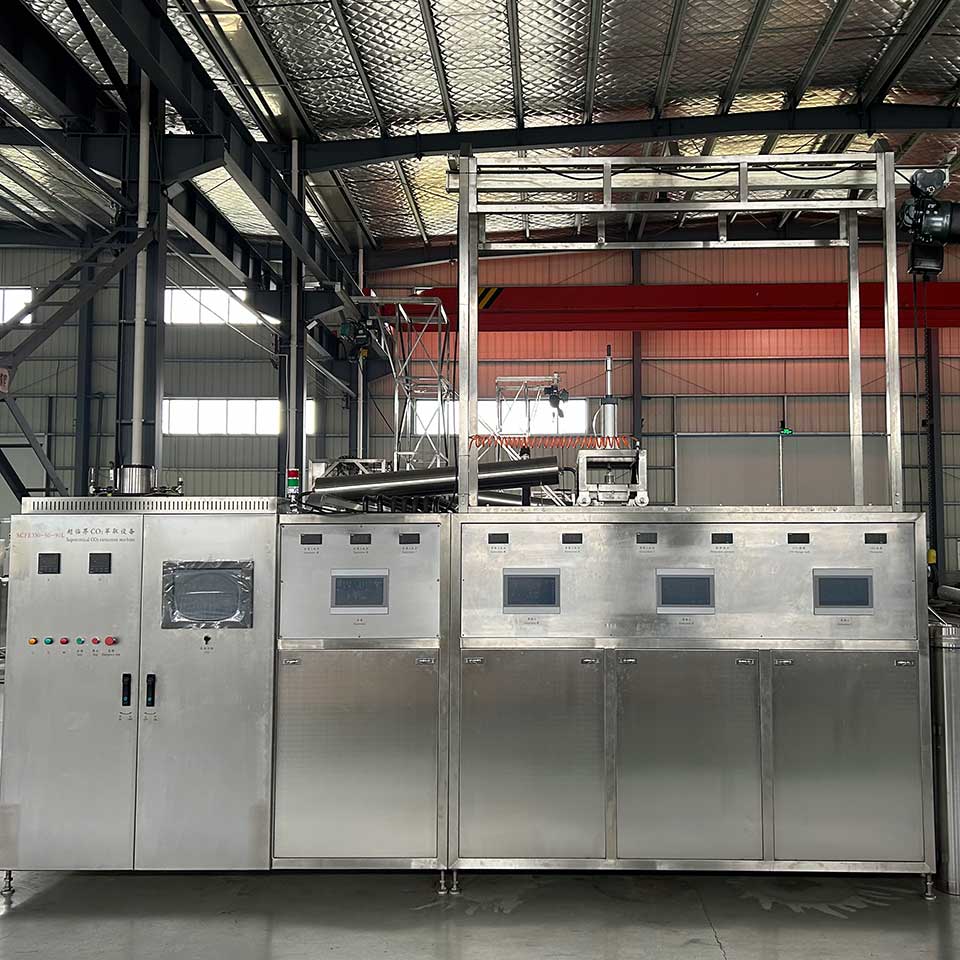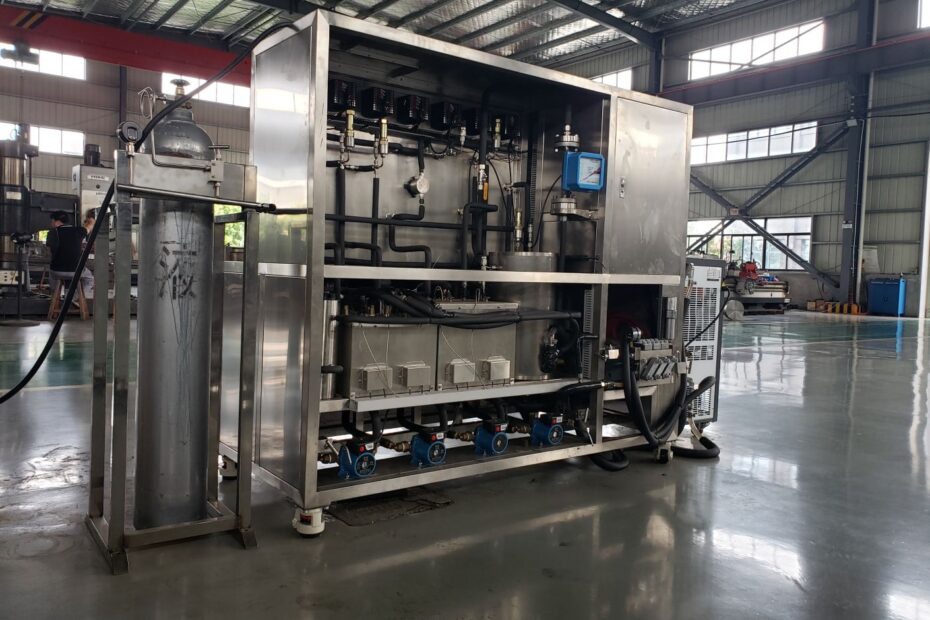Depending on the temperature and pressure, substances show state changes such as liquid, gas, and solid. Gas molecules have the greatest kinetic energy and maximum penetrability. When the temperature drops and the pressure rises, the gas will condense into liquid, and the liquid molecules The distance between them is greatly reduced, and the density and solubility increase significantly.
For a specific substance, when it is above its critical temperature and critical pressure, if pressure is applied to the gas in this state, the gas will not liquefy, but its density will increase, and it will have liquid-like properties while retaining the properties of a gas. The fluid in this state is called supercritical fluid (SCF).
Top 4 Chemical properties of supercritical fluids
- Hydrogen bonds The number and stability of hydrogen bonds in the fluid changes between the supercritical state and the normal state. Temperature and pressure are factors that affect the stability and number of hydrogen bonds, but the degree of influence is different. For example, the stability of hydrogen bonds in ethanol continues to decrease as the temperature increases, and the effect of pressure is smaller in comparison.
- Ion product Ion product is affected by temperature and pressure, resulting in differences in ion product between the supercritical state and the normal state of the fluid. In the supercritical region, as the temperature and pressure increase, the ion product increases and is much higher than in the normal state. In the supercritical state, the density becomes larger as the temperature and pressure increase, resulting in an increase in ion product, which is several orders of magnitude higher than in the normal state.
- Esterification reaction: Esterification reaction, also called alcoholysis, is the replacement of alcohol in glyceride with another alcohol. Compared with alcohol solutions, the esterification reaction rate of supercritical alcohol is extremely high. Sasaki’s research concluded that under conditions where at least one of the oil and yeast is in a supercritical state, a small amount of alkaline catalyst is added to react within a certain temperature and time. Compared with ordinary transesterification, supercritical transesterification has the characteristics of high yield and short reaction time. This is due to the enhanced solubility of supercritical alcohol in non-polar oils and its surface tension is approximately 0, which can form a homogeneous reaction. In addition, as the supercritical alcohol ion product increases, it can dissociate to generate more alcohol ions, and the concentration of alcohol ion groups is usually positively correlated with the degree of esterification reaction, so esterification reactions are more likely to occur.
- Reducing property: Compared with the supercritical state, the reducing property of alcohol is weaker in the standard state. Under catalyst-free conditions, alcohol solutions do not undergo dehydrogenation reactions, while supercritical alcohols can undergo dehydrogenation reactions and are more reducible to unsaturated bonds. Supercritical high temperature and high pressure conditions may be the reason for the enhanced reducibility of alcohol. Daimon studied the reaction of supercritical 2-propanol in reducing aldehydes, and the results showed that 2-propanol is an effective reducing agent for converting aldehydes into alcohols. It was also found that the reduction rate increased as the temperature increased.

Application principles and characteristics of supercritical CO₂ fluid extraction technology
Supercritical fluid extraction technology is a new type of chemical separation technology developed since the 1970s. This technology combines the characteristics and functions of solvent extraction and distillation. By adjusting the temperature and pressure of the system, the solubility of certain organic compounds in fluids in a supercritical state can be increased by several orders of magnitude.
The basic principle of supercritical extraction is: the supercritical fluid as a solvent comes into contact with the material to be extracted, so that certain components in the material (called extractants) are dissolved and carried by the supercritical fluid, thereby interacting with other components in the material (called extractants). The raffinate) is separated, and then the density of the supercritical fluid is reduced by lowering the pressure or adjusting the temperature, thereby reducing its solubility, allowing the supercritical fluid to parse out the extract it carries, and achieve the purpose of extraction and separation.
As a commonly used solvent for supercritical fluid extraction, CO₂ has a low critical temperature (31.06°C) and critical pressure (7.39MPa). On the one hand, it can realize supercritical extraction operations near room temperature, reducing energy consumption. On the other hand, it also reduces the requirements for equipment and ensures that heat-sensitive substances are not thermally decomposed during the extraction process.
The solubility capacity of supercritical CO₂ fluid extraction is roughly proportional to density. Near the critical point of carbon dioxide, small changes in temperature and pressure can cause large changes in fluid density, thereby causing significant changes in the solubility of supercritical carbon dioxide fluid. Therefore, by changing the temperature and pressure of the initial critical carbon dioxide, substances can be extracted selectively.
Conclusion
Supercritical CO2 fluid extraction equipment stands as a testament to the innovation and progress in modern extraction processes. Supercritical CO2 fluid extraction technology is a new separation technology in modern chemical separation. It has the characteristics of fast mass transfer rate, strong penetration ability, high extraction efficiency and low operating temperature. This technology has been widely used in medicine, food, chemical industry and other industries.
